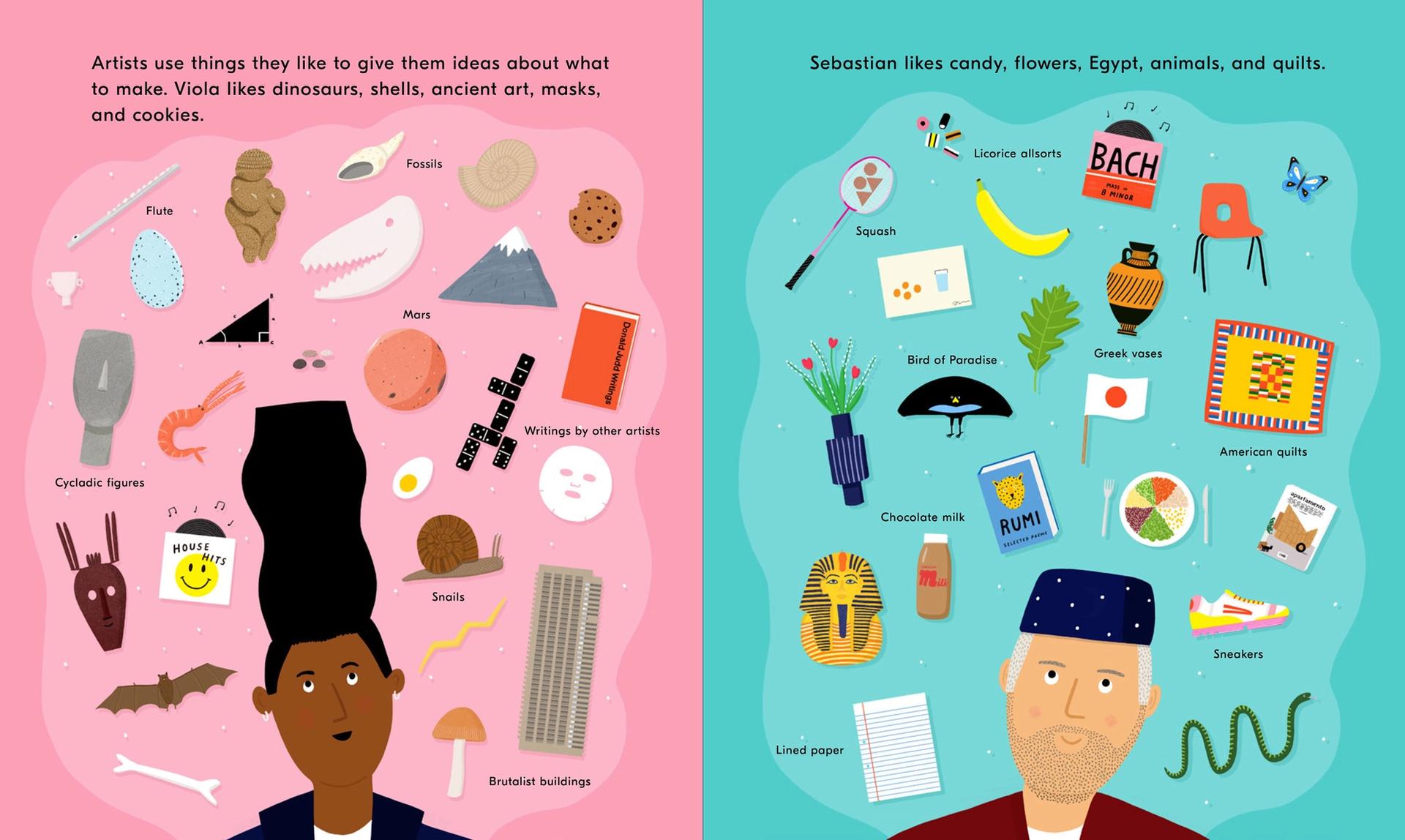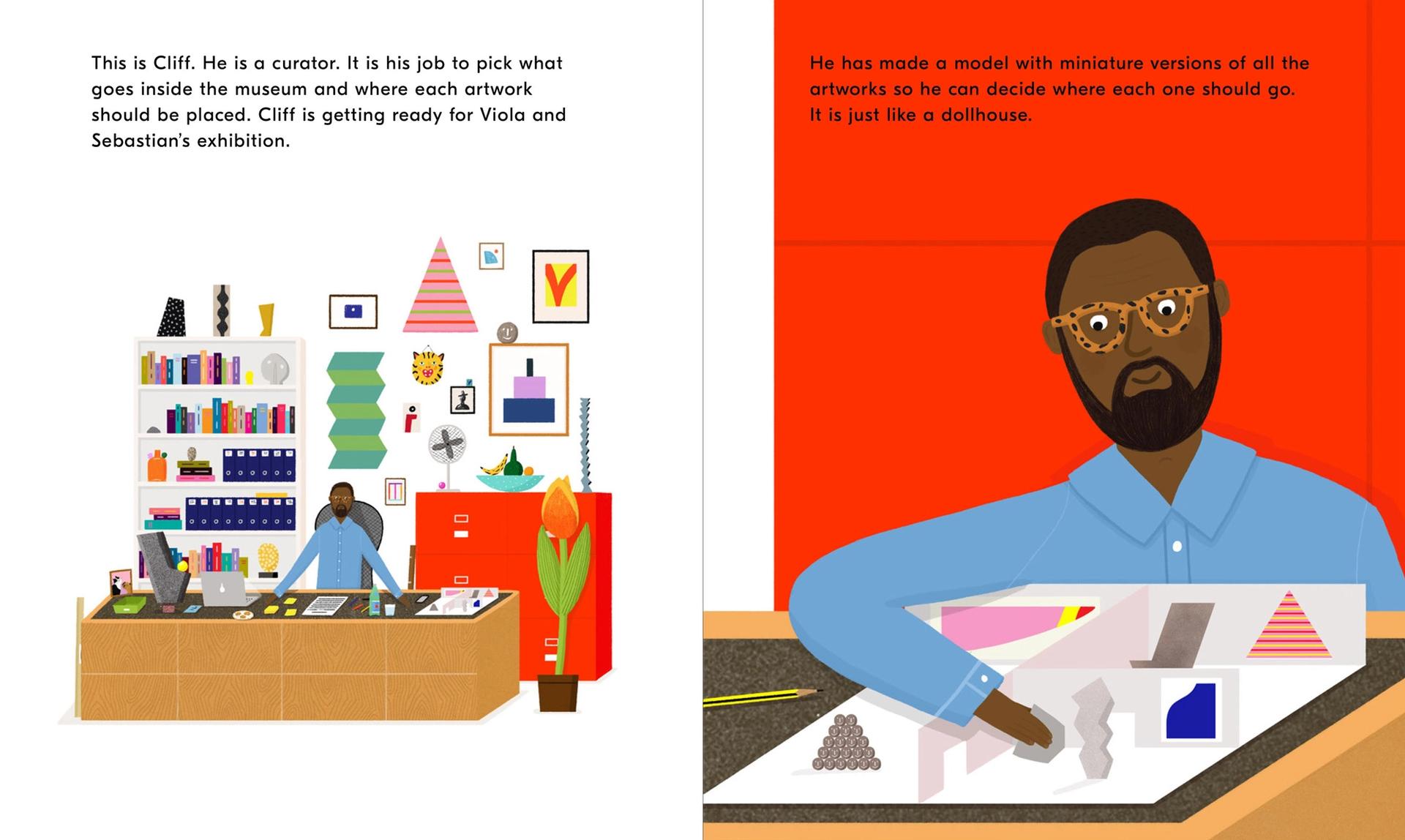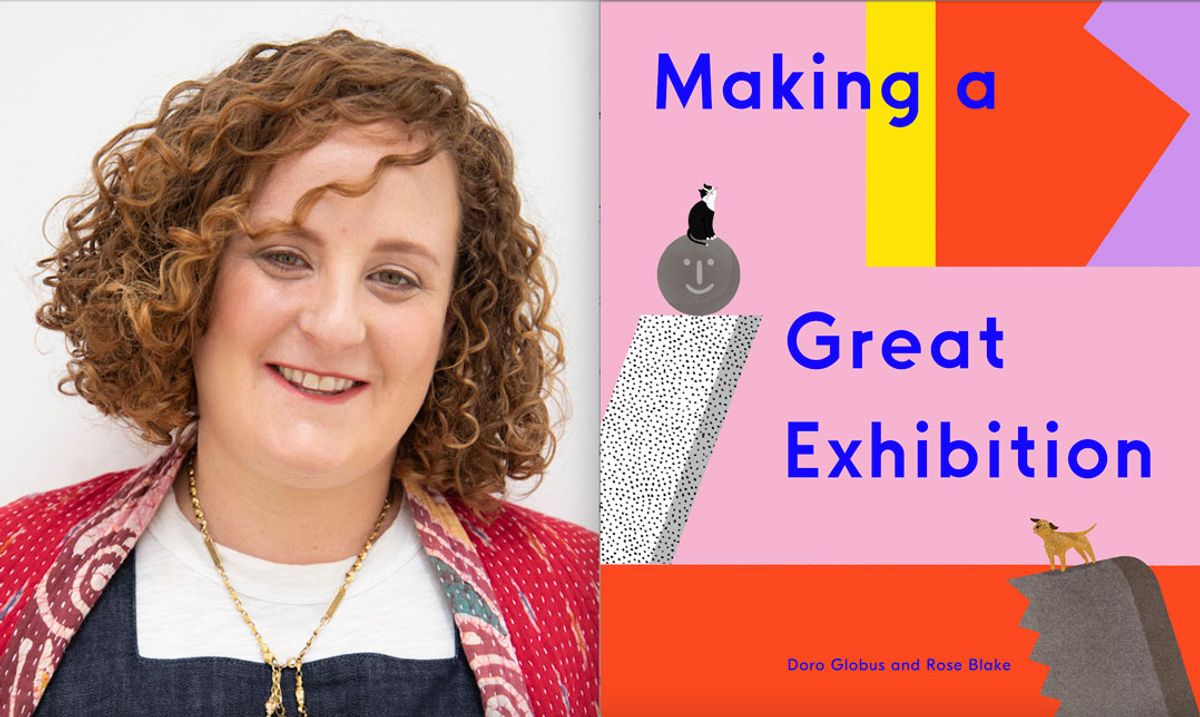In an unusual move, David Zwirner Books is releasing a publication aimed at children called Making a Great Exhibition. The author of the book Doro Globus, who is also the managing director of David Zwirner Books, teamed up with the illustrator Rosie Blake on a child-friendly exploration into how artists and museums operate. In outlining the journey of works as they head from two artists’ studios—sculptor Viola and painter Sebastian—to a museum exhibition, the book shows that it “takes many people to make a great exhibition”. These include the conservator (“I carefully fix anything that may have gotten damaged”), an art handler (“you can find me at work installing the exhibition”) and Cliff the curator whose “job is to pick what goes inside the museum and where each artwork should be placed”. We asked Globus how and why she put together the book.

A spread from Making a Great Exhibition (2021) Courtesy of David Zwirner Books
The Art Newspaper: How long did it take to put Making a Great Exhibition together?
Doro Globus: I have been thinking about this book for several years, but the process of writing and creating the book took about two years. One of the most exciting challenges was finding the right collaborator. I had never worked with an illustrator before and it took time to find someone who could share in my vision. Meeting Rose Blake truly kickstarted the book; she was raised by an artist and I was raised by a curator, so I knew right away that we could bring our own backgrounds to the story. I was blown away by the way her illustrations appeal to both children and adults, and felt they came from a true understanding of contemporary art.
We started off by working on a storyboard for each spread. I then shared with her photographs of things that have interested me throughout my 15-year career in the art industry, from shipping crates to works being installed to printing presses and wonderful celebratory dinners. Rose used these as a starting point and the book came together surprisingly quickly from there.
Is the main aim to make museums and galleries less intimidating for both children—and adults?
I have always found it sad that many people still find museums and galleries intimidating. My hope is that by drawing back the curtain and showing all the people and skills involved in making exhibitions, these spaces will become more accessible and relatable. The primary goals of the book are to highlight the value of creativity and creative careers; to showcase processes and collaboration; and to open up the workings of museums and galleries to children and adults.
My kids are three and six and they spend so much time making: painting, drawing, sculpting, dressing up, creating books. I can see as they get older these creative tendencies get increasingly devalued and de-emphasized in the education system and by society at large. Just this summer, the UK government cut funding for arts and design by 50%. If, in 2021, the government does not understand the value of arts, and how much opportunity the arts sector offers in terms of career prospects, then we really do need books like this to open up our world.

A spread from Making a Great Exhibition (2021) Courtesy of David Zwirner Books
Was writing for children difficult?
As a trained art historian, I am used to writing in response to art, and as a mum of two young children, I love talking about art in a way that young people can understand and enjoy. I am also greatly influenced by a new development in children’s publishing that presents more grown-up stories, themes, and ideas in an extremely accessible way.
One of my many influences is Maria Isabel Sánchez Vegara’s Little People Big Dreams, a series of biographies of figures from many fields that features Rosa Parks, Frida Kahlo, and Alan Turing, to name a few, without sugarcoating the stories or making them scary. I wanted my book to step back from celebrating the finished product or a single ‘celebrity’ to instead look at the many people and processes that make an exhibition happen. I hope to continue the series and share how books, films, plays, albums, buildings, and maybe even how dinners at restaurants are made.
• Making a Great Exhibition, Doro Globus and Rosie Blake, David Zwirner Books, 40pp, £14.95 (hb)



